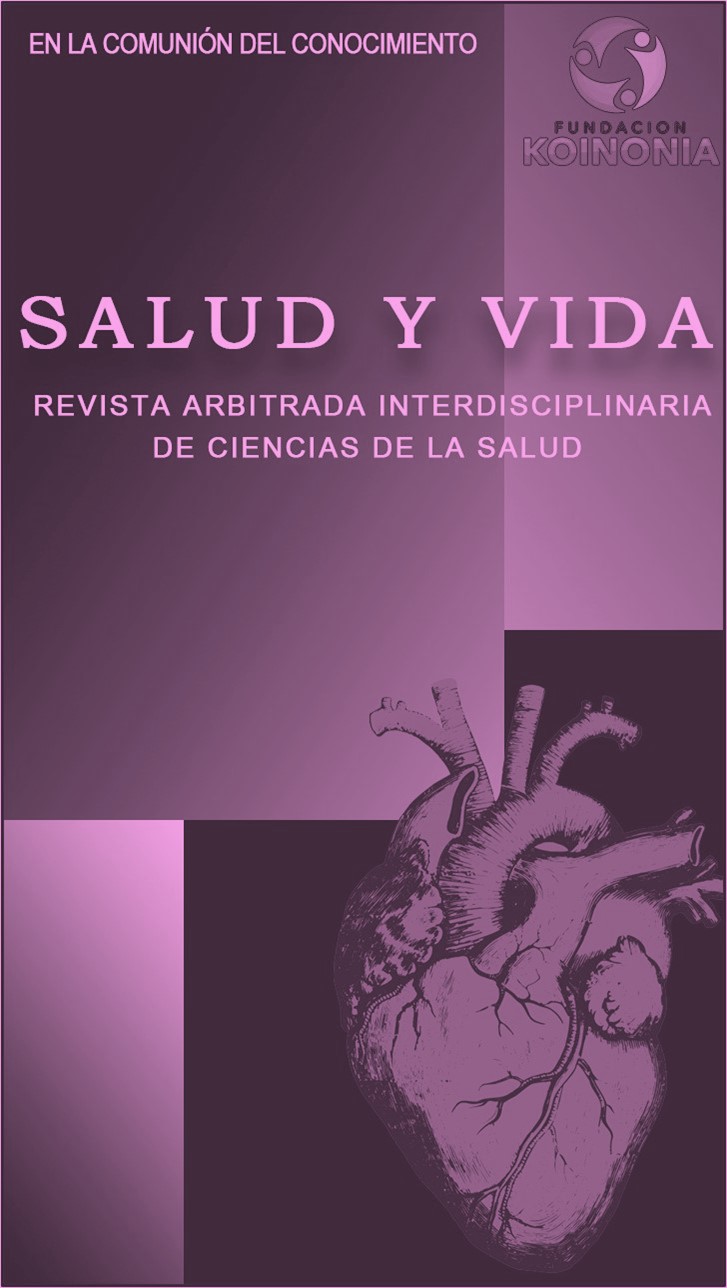Panorama actual de la intrusión dentaria con mini tornillos en mordida profunda anterior
DOI:
https://doi.org/10.35381/s.v.v8i2.4262Palabras clave:
Maloclusión, mordida abierta, maloclusión de angle clase II, (Fuente: DeCS)Resumen
Objetivo: Evaluar la eficacia de los microimplantes para la intrusión dentaria en pacientes con clase II esqueletal y mordida profunda anterior. Método: Se realizó una revisión en PubMed y Epistemonikos entre 2013 y 2023. Se seleccionaron 13 estudios relevantes para el análisis. Resultados: Los resultados mostraron que los microimplantes, colocados entre los incisivos centrales y laterales maxilares con una fuerza de 30 gramos por lado, pueden provocar reabsorción radicular. Esto subraya la necesidad de una gestión cuidadosa de la fuerza aplicada y la implementación de protocolos estandarizados para minimizar riesgos y optimizar resultados. Conclusiones: La estética dentofacial, especialmente la sonrisa, es fundamental en la demanda de tratamientos ortodónticos debido a su impacto en la percepción interpersonal y el bienestar emocional. La mordida profunda, caracterizada por una cobertura excesiva de los incisivos maxilares sobre los mandibulares, requiere un enfoque cuidadoso en el tratamiento para evitar complicaciones como la reabsorción radicular.
Descargas
Citas
Gomaa N, Fakhry N, Elmehy G, Montasser M. Smile changes after intrusion of maxillary incisors with temporary anchorage devices (TADs) or accentuated compensating curve arch wire. Indian Journal of Dental Research. 2019;30(4):531-538. https://doi.org/10.4103/ijdr.IJDR_332_17
Shakti P, Singh A, Purohit A, Shah N. Maxillary Incisor Intrusion Using Mini-Implants and Conventional Intrusion Arch: A Systematic Review and Meta-Analysis. Turkish Journal of Orthodontics. 2022;35(2):150-156. https://doi.org/10.1038/s41380-018-0271-6
Kim JS, Park JH, Heo S, Chae JM. Biomechanical and clinical considerations in deep bite treatment using temporary skeletal anchorage devices. Journal of the World Federation of Orthodontists. 2024;13(1):10-17. https://doi.org/10.1016/j.ejwf.2023.12.004
Ramos Montiel RR. Theoretical epistemic foundation of the maxillofacial cranio-cervico diagnosis [Fundamento teórico epistémico del diagnóstico cráneo-cérvico maxilofacial]. Revista Mexicana de Ortodoncia. 2019;7(4):180-182. https://n9.cl/s6qf2
Vela-Hernández A, Gutiérrez-Zubeldia L, López-García R, García-Sanz V, Paredes-Gallardo V, Gandía-Franco JL, Lasagabaster-Latorre F. One versus two anterior miniscrews for correcting upper incisor overbite and angulation: a retrospective comparative study. Progress in Orthodontics. 2020;21(1). https://doi.org/10.1186/s40510-020-00336-2
Sosly R, Mohammed H, Rizk MZ, Jamous E, Qaisi AG, Bearn DR. Effectiveness of miniscrew-supported maxillary incisor intrusion in deepbite correction: A systematic review and meta-analysis. In Angle Orthodontist. 2020;90(2):291-304. https://doi.org/10.2319/061119-400.1
Trelles Méndez JA, Toledo Jimenez JA, Jumbo Alba JD, Iñiguez Pérez MM, Ramos Montiel RR, Ramírez Romero DE. Morfología cefalométrica de la sínfisis del mentón en individuos jóvenes de la ciudad de Quito-Ecuador [Cephalometric morphology of the chin symphysis in young individuals from the city of Quito-Ecuador]. Odontología Vital. 2021;2(2):39-48.
Aras I, Tuncer AV. Comparison of anterior and posterior mini-implant-Assisted maxillary incisor intrusion: Root resorption and treatment efficiency. Angle Orthodontist. 2016;86(5):746-752. https://doi.org/10.2319/085015-571.1
Montiel Ramos RR, Cabrera GC, Urgiles CU, Centeno FJ. Aspectos metodológicos de la investigación [Methodological aspects of the investigation]. Revista Científica de Investigación actualización del mundo de las Ciencias. 2018;2(3):194-211.
Tilekar NR, Swami V, Sabane A, Bhosale V. Comparison of the effects of varying positions of mini-implants on intrusion of maxillary incisors-an In vivo study. Journal of Indian Orthodontic Society. 2018;52(1):35-43. https://doi.org/10.4103/jios.jios_222_17
Atalla A, Fahim F, Aboul Fotouh M, Yehia Foda M, Atalla AI, AboulFotouh MH, Fahim FH, Foda MY. The efficiency of different incisor intrusion methods in the treatment of adult deep bite patients: A systematic review and meta-analysis. 2004;64: https://www.researchgate.net/publication/328410658
Martin JG, Javed F, Rossouw PE, Michelogiannakis, D. Influence of mini-screw implant-assisted intrusion on orthodontically induced inflammatory root resorption: a systematic review. In European Archives of Paediatric Dentistry. 2021;22(3):341-349. https://doi.org/10.1007/s40368-020-00588-w
Reddy S, Jonnalagadda V. Mini-implant assisted gummy smile and deep bite correction. Contemporary Clinical Dentistry. 2021;12(2):199-204. https://doi.org/10.4103/ccd.ccd_630_20
Ramos R, Puebla Ramos L, Palmas SO. Oyen OJ, Cabrera Padrón MI, Espinoza Arias CJ, Pesantez Rodas NS. Biology and Mechanobiology of the Tooth Movement during the Orthodontic Treatment. 2024; https://doi.org/10.5772/intechopen.114016
Parayaruthottam P, Antony V. Midline mini-implant-assisted true intrusion of maxillary anterior teeth for improved smile esthetics in gummy smile. Contemporary Clinical Dentistry. 2021;12(3):332-335. https://doi.org/10.4103/ccd.ccd_425_20
Jung, M. H. Vertical control of a Class II deep bite malocclusion with the use of orthodontic mini-implants. American Journal of Orthodontics and Dentofacial Orthopedics. 2019;155(2):264-275. https://doi.org/10.1016/j.ajodo.2018.08.016
Qamruddin I, Shahid F, Alam MK, Zehra Jamal W. Camouflage of Severe Skeletal Class II Gummy Smile Patient Treated Nonsurgically with Mini Implants. Case Reports in Dentistry. 2014;1-7. https://doi.org/10.1155/2014/382367
Cobos-Torres JC, Ramos R, Ortega Castro JC, Ortega Lopez MF. Hearing Loss and Its Association with Clinical Practice at Dental University Students Through Mobile APP: A Longitudinal Study. Advances in Intelligent Systems and Computing. 2020;10(99):3-17. https://doi.org/10.1007/978-3-030-35740-5_1
Publicado
Cómo citar
Número
Sección
Licencia
Derechos de autor 2024 Natalia Alejandra Gavilanes-Bayas, Christian David Zapata-Hidalgo, Ebingen Villavicencio-Caparo

Esta obra está bajo una licencia internacional Creative Commons Atribución-NoComercial-CompartirIgual 4.0.
CC BY-NC-SA : Esta licencia permite a los reutilizadores distribuir, remezclar, adaptar y construir sobre el material en cualquier medio o formato solo con fines no comerciales, y solo siempre y cuando se dé la atribución al creador. Si remezcla, adapta o construye sobre el material, debe licenciar el material modificado bajo términos idénticos.
OAI-PMH: https://fundacionkoinonia.com.ve/ojs/index.php/saludyvida/oai.









